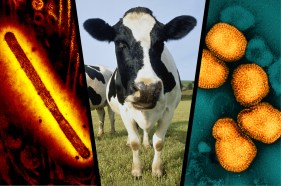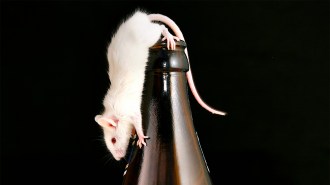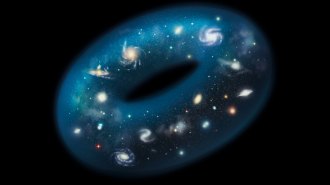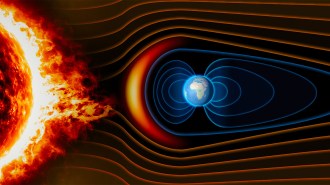News
-
 Health & Medicine
Health & MedicineCows might host both human and bird flus
Both kinds of influenza viruses may break into cattle cells using receptors similar to those in people, wild birds and poultry.
-
 Health & Medicine
Health & MedicineA new gel stops mice from getting too drunk
The iron-milk substance can break down alcohol fast and protect against liver damage in mice. Scientists hope to test the gel in people next.
-
 Cosmology
CosmologyThe universe may have a complex geometry — like a doughnut
Physicists haven’t yet ruled out the possibility that the universe has a complicated topology in which space loops back around on itself.
-
 Health & Medicine
Health & MedicineChronic asthma could be caused by cell overcrowding in the airways
Identifying drugs to reduce the excessive expulsion of cells in the lung lining could reduce the damage of chronic asthma.
-
 Health & Medicine
Health & Medicine50 years ago, phantom pain was blamed on misfiring nerves
Researchers now know that the cause of post-amputation pain is more complex, which is leading to new treatments.
-
 Earth
EarthA weaker magnetic field may have paved the way for marine life to go big
Decreased protection from cosmic radiation may have increased oxygen levels in the atmosphere and oceans, allowing animals to grow larger.
-
 Space
SpaceNASA’s budget woes put ambitious space research at risk
Mars Sample Return and missions to study other planets and celestial bodies, including lunar efforts, face big cuts and delays.
By Adam Mann -
 Animals
AnimalsThis snake goes to extremes to play dead — and it appears to pay off
When dice snakes fake their death to avoid predators, those that use a combination of blood, poop and musk spend less time pretending to be dead.
-
 Neuroscience
NeuroscienceLampreys have ‘fight or flight’ cells, challenging ideas about nervous system evolution
The discovery of sympathetic nervous system cells in lampreys draws a closer tie between the animal and complex vertebrates — such as humans.
-
 Climate
ClimateAs the Arctic tundra warms, soil microbes likely will ramp up CO2 production
Experiments in mini greenhouses show how the tiny organisms lurking underground in a "sleepy biome" could be a contributor to climate change.
-
 Psychology
PsychologyOnline spaces may intensify teens’ uncertainty in social interactions
Little is known of how teens learn about emotions online and then use that knowledge to cope with social uncertainty during in-person encounters.
By Sujata Gupta -
 Animals
AnimalsWant to see butterflies in your backyard? Try doing less yardwork
Growing out patches of grass can lure adult butterflies and moths with nectar and offer lawn mower–free havens for toddler caterpillars.
By Susan Milius